The Journal Citation Reports 2024 release will include unified rankings across subject categories, helping to simplify journal performance assessment.
At Clarivate™, we are deeply committed to working with the research community to safeguard research integrity. We invest significant effort in ensuring that the Web of Science Core Collection™ only contains content from trustworthy sources and over the last few years, we’ve introduced a series of editorial policy changes that affect the Journal Citation Reports™ (JCR™). These contribute to our efforts to promote transparency, to provide more data and help level the playing field. In doing so, we help protect the integrity of the scholarly record.
As we prepare for the release of the Journal Citation Reports for 2024, our commitment to enhancing transparency and trust in the scholarly record takes center stage. As announced in March 2023 and described in more detail in February 2024, we are moving from edition-specific Journal Impact Factor™ (JIF)™ category rankings to unified rankings. The following examples illustrate how this change will affect the 2023 dataset.
Trusted and reliable metrics for journal evaluation
This year’s JCR will introduce unified rankings across subject categories. This approach is designed to simplify the evaluation of journal performance by providing a more comprehensive view of each journal’s standing within its respective subject area.
Each subject category ranking will include journals assigned to that category regardless of edition, including the Emerging Sources Citation Index™ (ESCI). More than 7,200 journals will have new subject category rankings with full JIF metrics in the JCR 2024 release. Of those, around 7,000 are from ESCI and 200 from the Arts & Humanities Citation Index™ (AHCI). The creation of unified category rankings will provide a simpler and more complete category view for the evaluation of journal performance.
Although we initially intended to apply this change to all subject categories, after consulting with the research community, we’ve decided not to apply it to arts and humanities-only categories. A deep dive into the data revealed that this approach would create an unexpectedly large number of ties in rank which, in turn would skew the quartile distributions, making them difficult to interpret and of questionable value to the community. In the spirit of transparency, we shared our findings and our hesitation to introduce these rankings with a set of publishers and some other industry stakeholders. Together, we arrived at the consensus that the responsible thing to do would be not to publish rankings for these categories. A complete list of these omitted categories is provided at the end of this blog.
Category-first approach
The category-first approach simplifies journal performance assessment with a holistic view of all journals in each subject category. In the JCR 2023 release, there were 178 subject category rankings for the Science Citation Index Expanded™ (SCIE) and 58 subject category rankings for the Social Science Citation Index™ (SSCI), totaling 236. With this year’s release, there are 229 subject category rankings, reduced slightly where subject categories are shared in both SCIE and SSCI.
These shared subject categories will combine into a single subject category ranking. Journals covered in both SCIE and SSCI for that shared category had a ranking for each edition in prior years. Now those journals will receive a single ranking in that subject category going forward. This change will not be applied retrospectively to earlier JCR data years.

Figure 1: JCR subject category rankings from the 2023 release to 2024.

Figure 2: Geology – SCIE ranking becomes Geology.

Figure 3: Psychiatry with two separate rankings in SCIE and SSCI combines into one Psychiatry ranking.
Exploring the impact of these changes
The inclusion of ESCI and AHCI journals in subject category rankings has led to an increase in category sizes, with SCIE subject categories seeing an average increase of ~30% and SSCI subject categories experiencing a larger average increase of ~85%. This reflects broader coverage of social science and arts and humanities journals in ESCI, and the inclusion of AHCI-only journals in social science shared categories for the first time. History is the category that grew most from AHCI journals, with ~36% of the increase coming from history journals only in AHCI.

Figure 4 – History now includes History journals in ESCI and History journals only in AHCI.
The distribution within quartiles across all categories and the journals within the categories follows an expected pattern where journals in SCIE, SSCI and AHCI are more heavily represented in the higher-performing quartiles and the majority of ESCI in the lower-performing quartiles.
In general, ESCI journals have a lower JIF than journals in the science or the social science indices in the same category. That’s because to enter SCIE or SSCI, a journal needs to pass our four impact criteria, which are designed to select journals with the highest scholarly impact, in addition to our 24 quality criteria.
Some ESCI journals have a higher JIF than the science and social science journals in the same category, and there are several reasons for this. First, the distinction between ESCI, SCIE and SSCI is not solely based on a journal’s JIF at a specific point in time; rather it hinges upon whether a journal passes our four impact criteria. Additionally, in 2022 we paused our impact evaluations of indexed journals in order to put more effort into our quality evaluations of submitted and indexed journals. This prioritization exercise has enabled us to address the growing issue of pollution in the scholarly literature.
Quartile distribution
Before
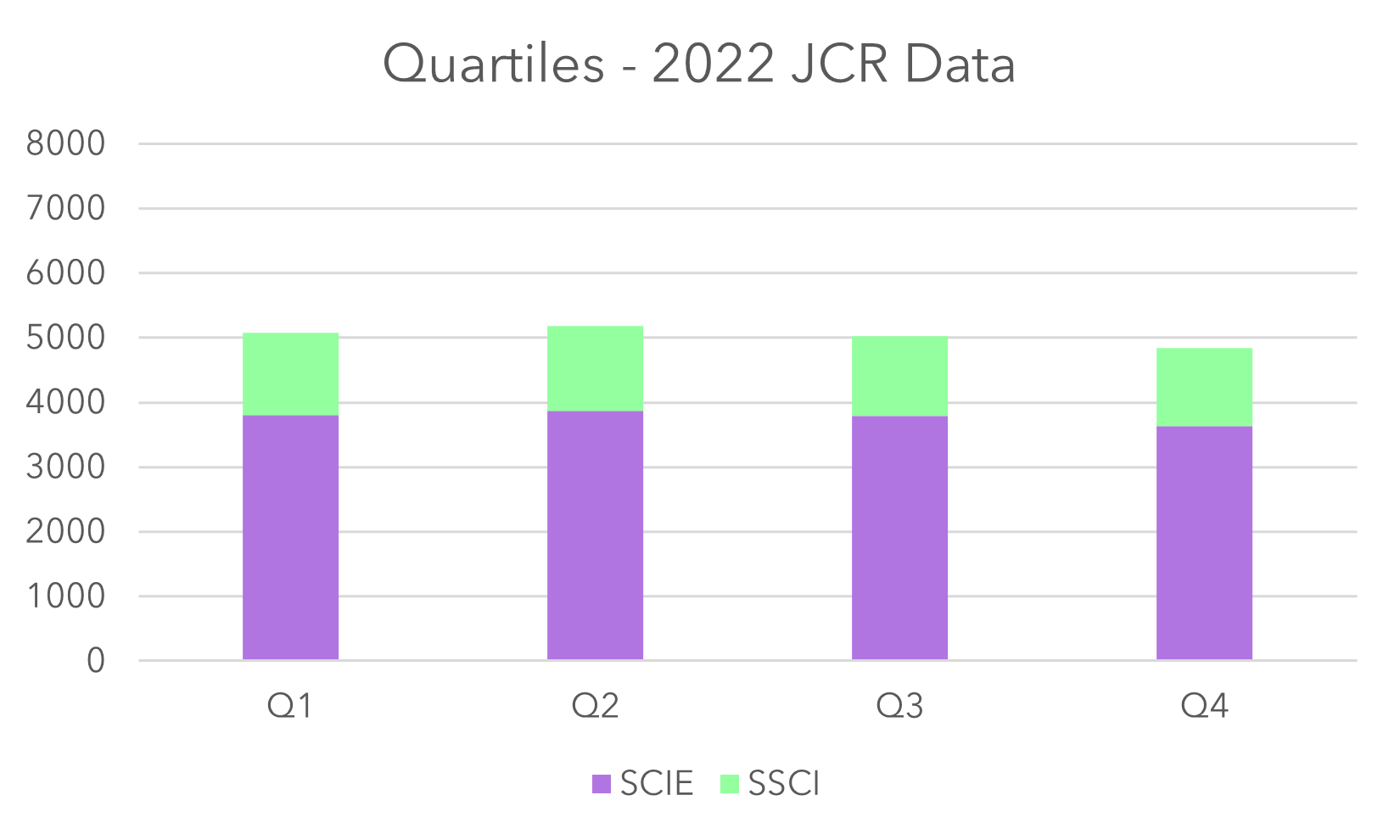
After
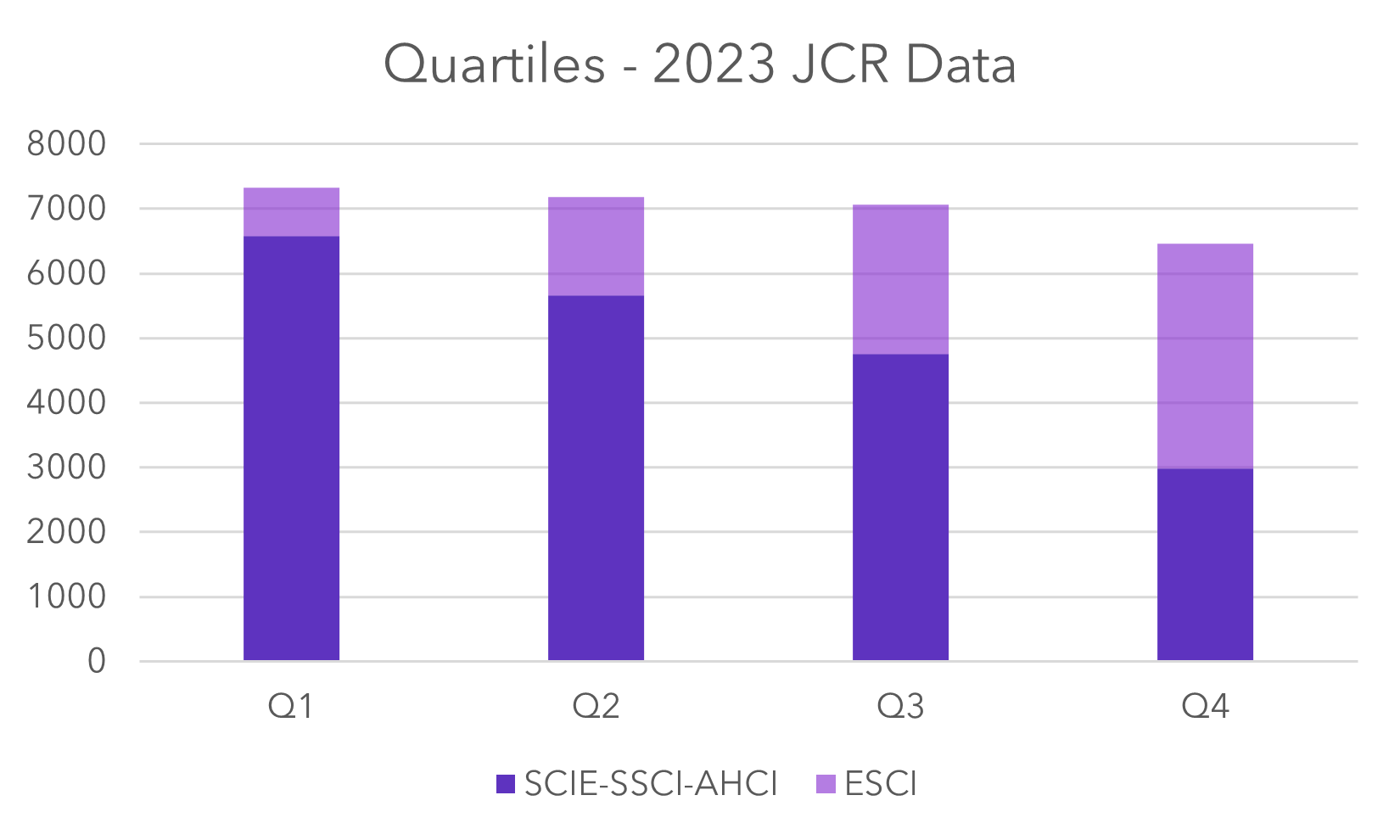
Science subject category example (SCIE+ESCI)
Before

After
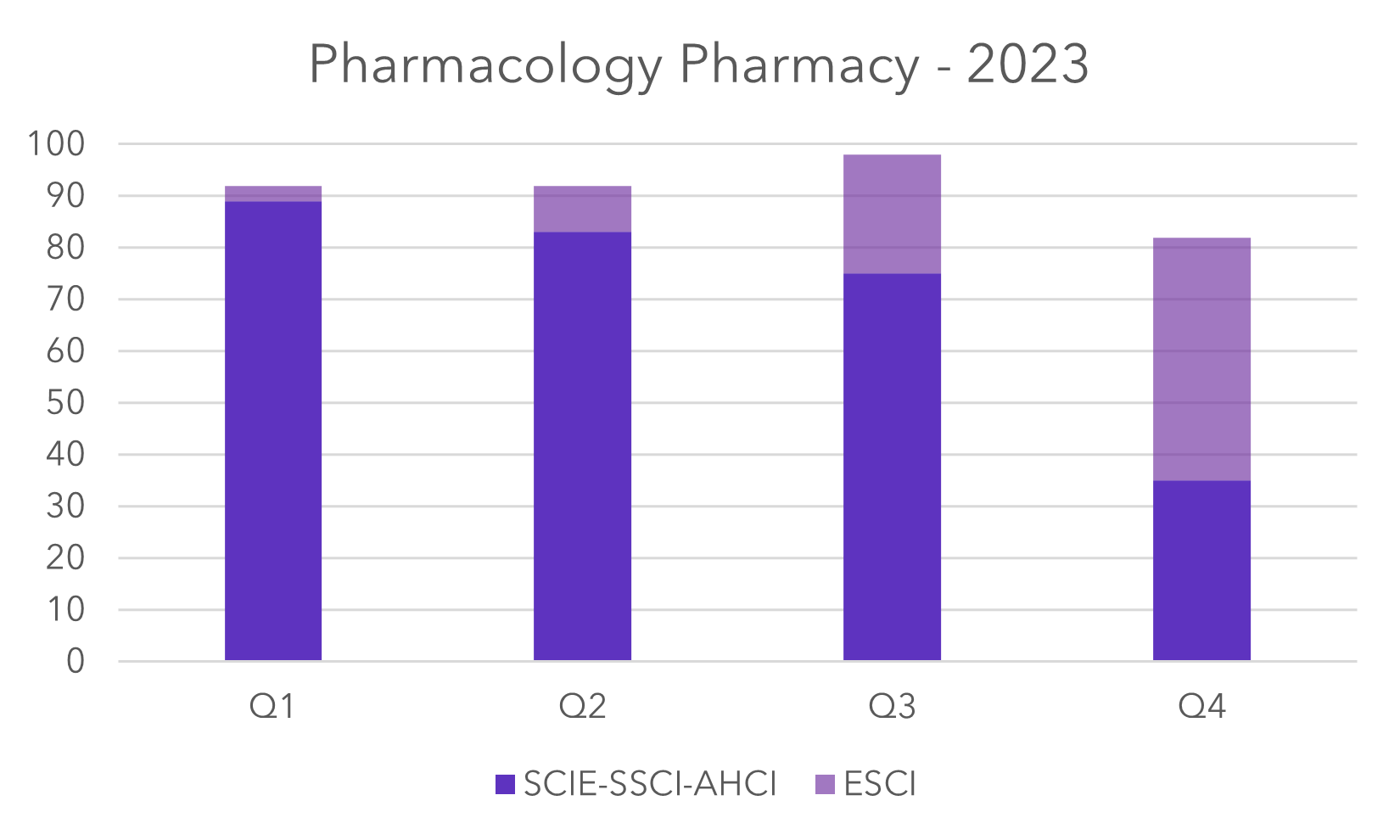
Social science category example (SSCI+ESCI)
Before
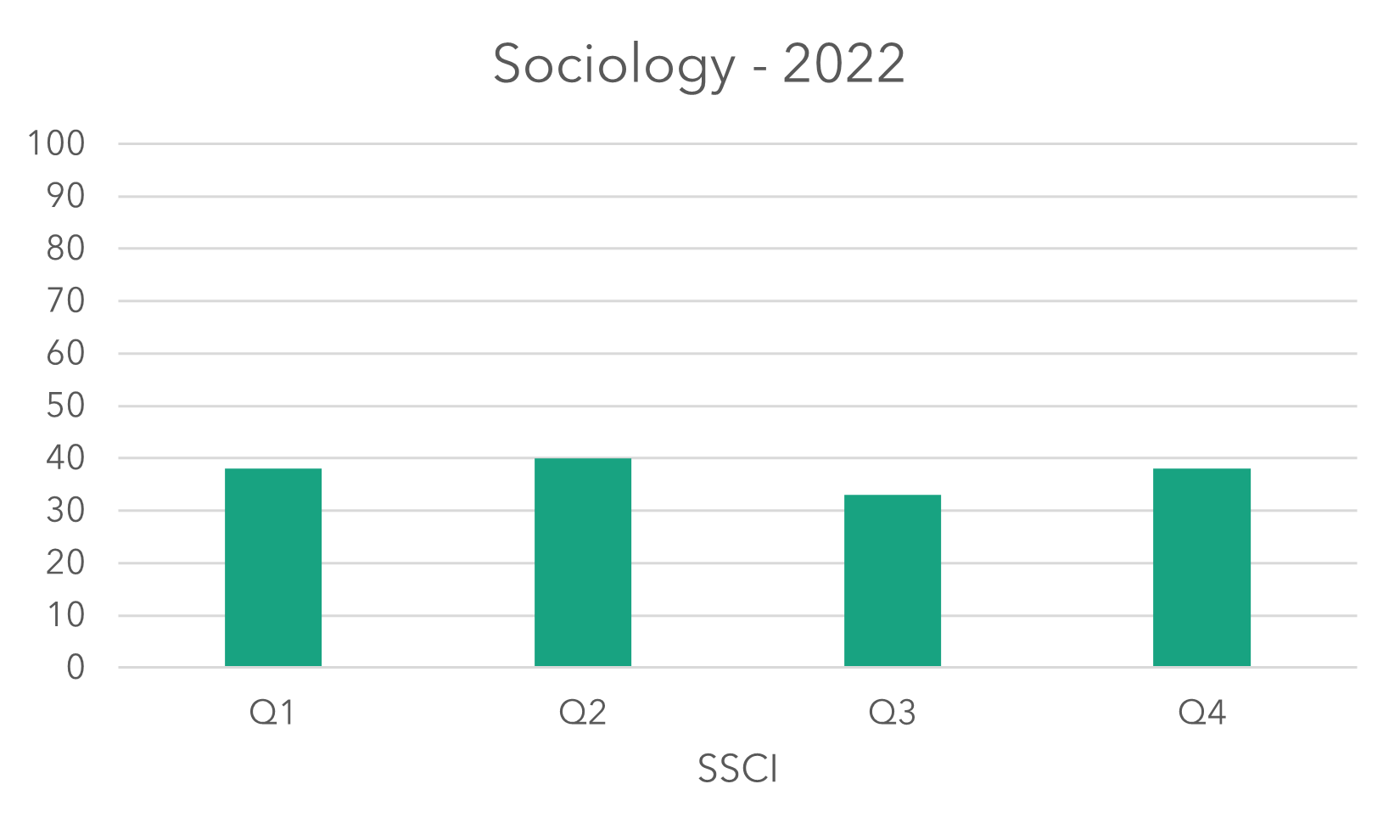
After
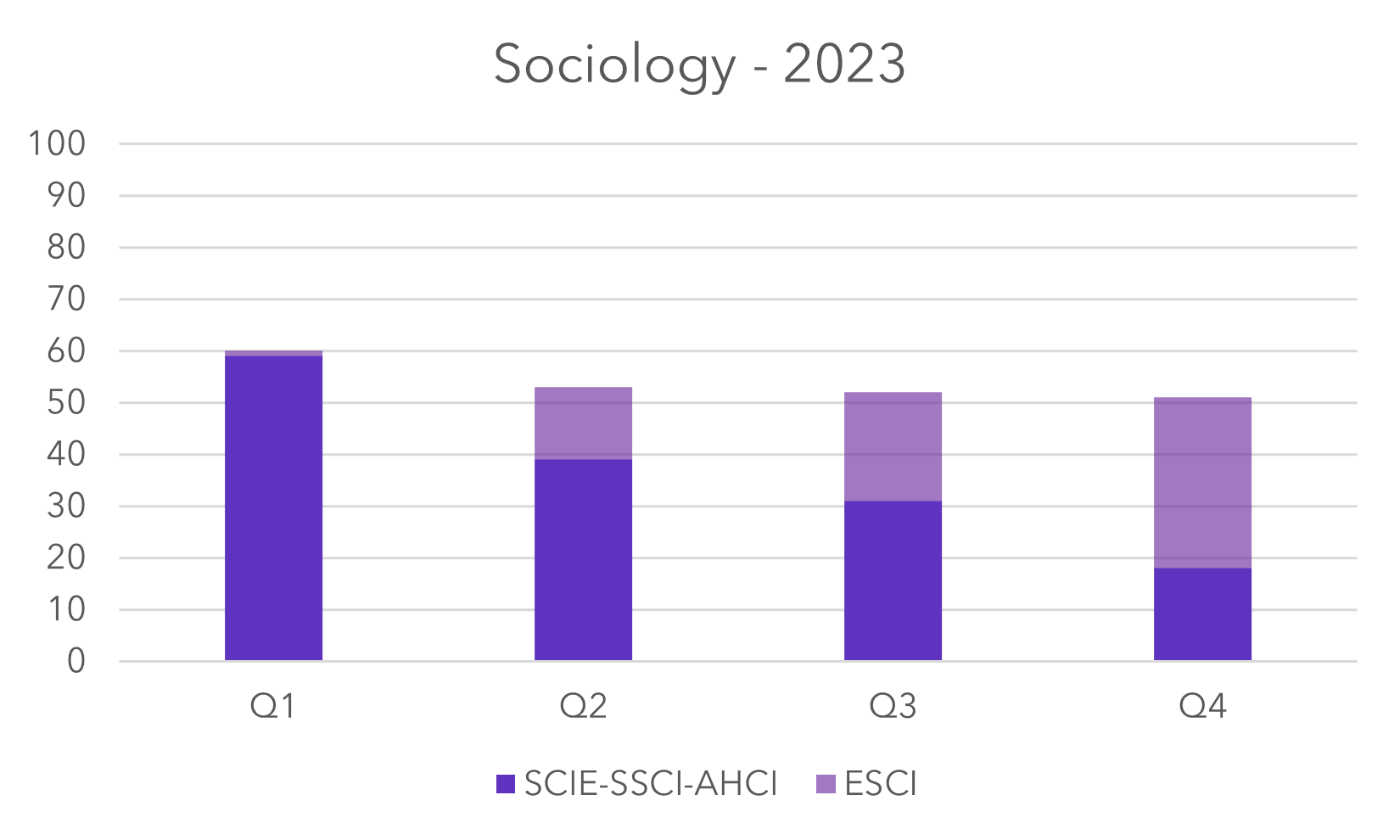
We remain committed to providing the research community with trusted and reliable metrics for journal evaluation by working closely with and consulting our partners. This coming change to the JCR, which focuses on a category-first approach with more than 7,000 additional journals, ensures that members of the research community will have the most complete picture of journals covered in the Web of Science Core Collection, supporting their decision-making and academic endeavors.
This is the second in a series of updates on the Journal Citation Reports 2024 release. Bookmark this page and stay tuned for further details as we continue to advance transparency and integrity in journal assessment.
SCIE+SSCI shared subject categories
Subject categories moving from two separate rankings to one are: History Philosophy of Science; Green Sustainable Science Technology; Nursing; Psychiatry; Public Environmental Occupational Health; Rehabilitation; Substance Abuse.
AHCI-only subject categories
Arts and humanities categories that will not be ranked are: Architecture; Art; Asian Studies; Classics; Dance; Film, Radio, Television; Folklore; Humanities, Multidisciplinary; Literary Reviews; Literary Theory & Criticism; Literature; Literature, African, Australian, Canadian; Literature, American; Literature, British Isles; Literature, German, Dutch, Scandinavian; Literature, Romance; Literature, Slavic; Medieval & Renaissance Studies; Music; Philosophy; Poetry; Religion; Theater; Archaeology; Language & Linguistics.





